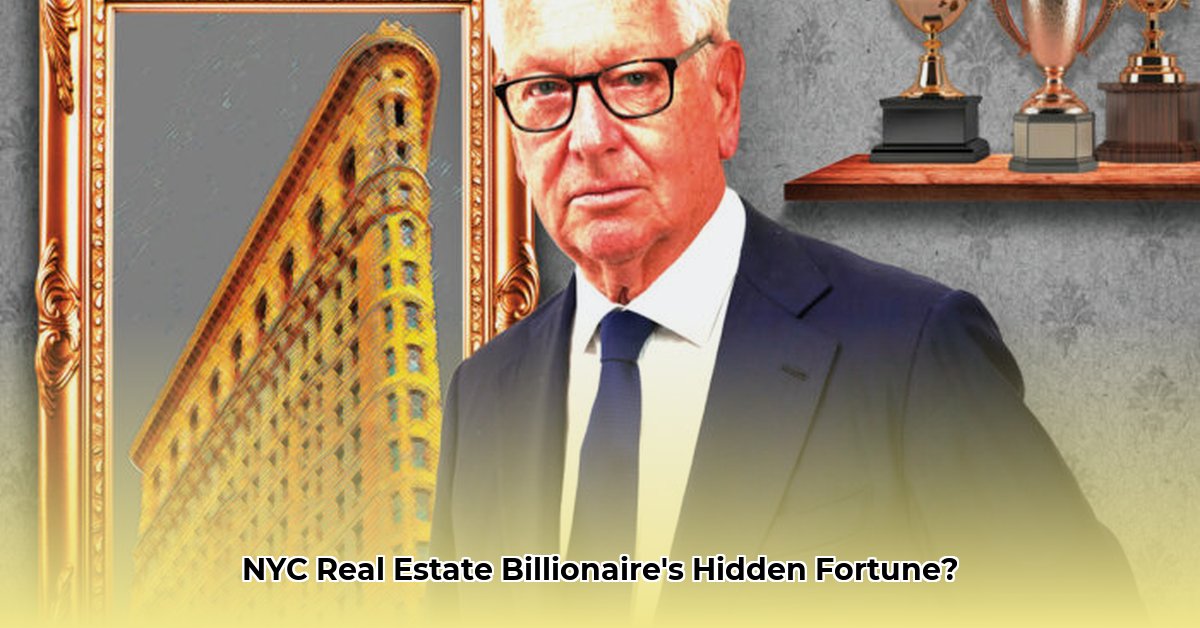
Daniel Brodsky's name resonates powerfully within New York City's real estate landscape. While his exact net worth remains undisclosed, the extraordinary success of The Brodsky Organization, a dynasty he spearheaded, offers a compelling narrative of wealth creation. This isn't a story of specific dollar figures but a testament to strategic vision, calculated risk-taking, and a deep understanding of the city's evolving market.
A Legacy Forged in Brick and Mortar: From Brownstones to Billion-Dollar Developments
The Brodsky Organization's journey began modestly in the 1950s, with the meticulous renovation of brownstones. This wasn't simply about profit; it was about establishing a reputation for quality and building a foundation for future growth. This early emphasis on excellence laid the groundwork for their later expansion into larger, more ambitious projects. How did a small-scale renovation business become a major player in NYC's real estate scene? The answer lies in a combination of foresight, adaptability, and a keen understanding of market dynamics.
Navigating Market Shifts and Capitalizing on Opportunities
The 1970s presented a new opportunity: the transformation of residential hotels. The Brodsky Organization skillfully seized this, demonstrating an ability to adapt to shifting market demands and demonstrating a keen business acumen. The decades that followed witnessed a consistent expansion into luxury condominiums and large-scale rental properties. Each strategic shift reflects a calculated risk, a willingness to evolve, and an uncanny ability to anticipate market trends. This foresight likely played a significant role in the overall success of the organization.
The 80/20 Advantage: Affordable Housing and Financial Acumen
A key element of The Brodsky Organization's success lies in its innovative use of the 80/20 program. This program incentivizes developers to include a percentage of affordable housing units in large-scale developments in exchange for significant tax abatements. Projects like the million-square-foot West End Towers stand as prime examples of this strategy's effectiveness. This approach not only generated substantial profits but also contributed positively to the community. This blend of financial acumen and social responsibility is a defining characteristic of The Brodsky Organization. Isn't this a powerful demonstration of a business model that achieves both financial success and community benefit?
Brooklyn's Transformation: Identifying Untapped Potential
Daniel Brodsky's leadership is particularly evident in their strategic focus on Brooklyn's development. They recognized the borough's burgeoning appeal before many others, highlighting their ability to anticipate and capitalize on emerging market trends. This wasn’t just about geographic expansion; it was about identifying a fundamental shift in the city’s demographics and housing preferences. This prescient move solidified their position as a major player in the city's real estate market, underscoring a remarkable ability to identify and exploit opportunities before they become mainstream.
The Brodsky Organization's Enduring Impact
The Brodsky Organization's legacy transcends mere financial success. Their developments have profoundly shaped the New York City landscape. From the revitalization of older neighborhoods to the construction of modern residential complexes, they’ve contributed significantly to the city’s ever-evolving urban fabric. Their projects aren't just buildings; they’re integral parts of the city's cultural and social landscape. Given their scale and longevity, it's evident that the organization's impact extends far beyond bricks and mortar. Have their projects significantly altered the fabric of NYC neighborhoods? Absolutely.
A Future of Innovation and Growth
The Brodsky Organization's future remains bright. With continued family involvement, the commitment to long-term vision and innovation is assured. We can expect them to continue to explore innovative financing options, prioritize sustainable building practices, and perhaps expand beyond New York City’s borders. Their past success is a strong indicator of their continued future growth and influence on the real estate market.
Key Takeaways:
- The Brodsky Organization's success is built on decades of adapting to NYC's dynamic real estate market.
- Strategic use of the 80/20 program has proven highly effective in balancing profit and social responsibility.
- A conservative, equity-driven approach minimizes financial risk and maximizes long-term stability.